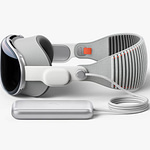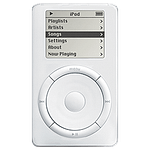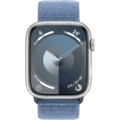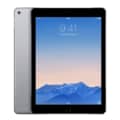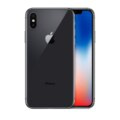- All Apple Devices
- iPod
- Apple iPod Nano 2nd Generation
Apple iPod Nano 2nd Generation
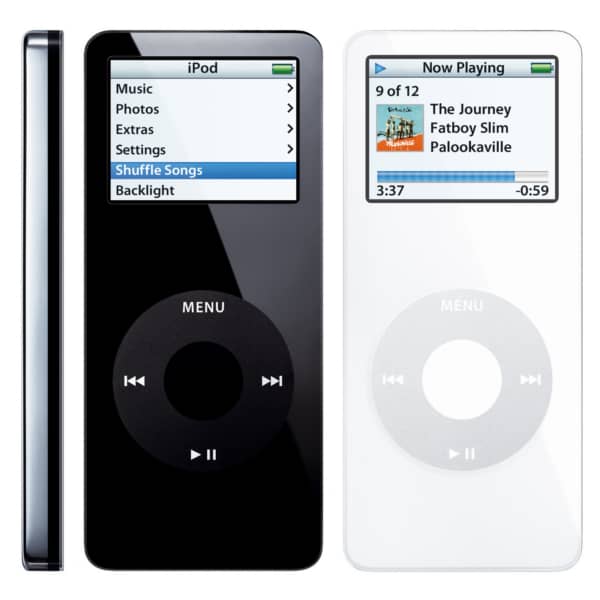
iPod Nano 2nd Generation
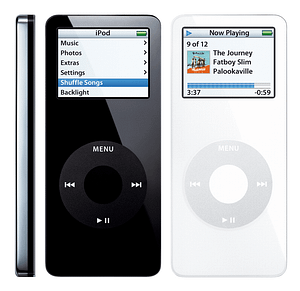
Product Brand: Apple
3
Pros
- Compact size and lightweight design
- Large storage capacity for music, photos, and videos
- Color display for easy navigation and viewing
- FM radio with live pause and station tagging features
- Support for games and other third-party applications
Cons
- No support for video playback
- Limited battery life compared to newer devices
- No Wi-Fi or Bluetooth connectivity
- Limited compatibility with newer operating systems and software
- No camera or other advanced features
Apple iPod Nano 2nd Generation Review and Features
The iPod Nano (stylised and marketed as iPod nano) is a discontinued portable media player designed and formerly marketed by Apple Inc.
On September 25, 2006, Apple updated the Nano line. The second-generation Nano featured a scratch-resistant, anodized aluminium casing like the earlier Mini’s design; the multiple colour choices mirrored those of the Mini.
However, unlike the second-generation Mini, the button labels were grey instead of matching the Nano’s casing (except for the black Nano, which had a black click wheel).
The second-generation Nano featured a 40% brighter, “more vibrant” display, a battery life upgrade (from 14 to 24 hours), and storage sizes doubled to 2, 4, and 8 GB models. The second generation also introduced gapless playback of audio files, along with a new search option.
The 2 GB model was available in silver only. The 4 GB was originally available in green, blue, silver, or pink, and the 8 GB model was initially only available in black – red was later added for 4 and 8 GB models. Apple claimed that the second generation iPod Nano’s packaging was “32% lighter with 52% less volume than the first generation”, thereby reducing environmental impact and shipping costs.
On October 13, 2006, Apple announced a special edition iPod Nano, Product Red, with a red exterior and 4 GB of storage. For each red iPod Nano sold in the United States, Apple donates US$10 to the Product Red initiative while retaining the regular price.
On November 3, 2006, Apple introduced a red 8 GB model due to ” outstanding customer demand”, again retaining the same price point as the equivalent black model.
Full Technical Specifications
General Technical Specifications
| Device Type | Portable Media Player |
| Released | 26 September, 2006 |
| Status | Discontinued |
| Predecessor | iPod Mini |
| Successor | iPod Touch |
| Generation | 2nd |
| Colors | Silver, Green, Blue, Pink, Red, Black |
| System Requirements |
Mac system requirements Macintosh computer with USB 2.0 port Mac OS X v10.3.9 or later iTunes 7 or later Windows system requirements PC with USB 2.0 Windows 2000 with Service Pack 4 or later, or Windows XP Home or Professional with Service Pack 2 or later iTunes 7 or later |
| Input and Output |
Dock connector 3.5-mm stereo headphone jack |
| iPod's Processor Type | Samsung ARM |
| iPod's Processor Speed | NA |
| RAM | 32 MB |
| iPod's Internal Memory |
2GB, 4GB, or 8GB flash drive Holds up to 500 to 2,000 songs in 128-Kbps AAC format Holds up to 25,000 iPod nano-viewable photos Stores data via USB flash drive |
| Audio Technology Features |
Skip-free playback Frequency response: 20Hz to 20,000Hz Audio formats supported: AAC (16 to 320 Kbps), Protected AAC (from iTunes Store), MP3 (16 to 320 Kbps), MP3 VBR, Audible (formats 2, 3, and 4), Apple Lossless, AIFF, and WAV User-configurable maximum volume limit Headphones Earphones Frequency response: 20Hz to 20,000Hz Impedance: 32 ohms |
| Headphone Type | 3.5mm Audio jack |
| Display Info |
1.5-inch (diagonal) liquid crystal display with blue-white LED backlight 176-by-132-pixel resolution, .168-mm dot pitch Support for display of multiple languages and characters simultaneously |
| Dimensions |
Height: 3.5 inch Width: 1.6 inch Depth: 0.26 inch |
| Weight | 1.41 ounces |
| Camera | No |
| SIM SIM (Subscriber Identity Module) is a small card that contains mobile network subscriber's account information. This allows the phone using the card to attach to a mobile network. The SIM card is most commonly associated with GSM and UMTS mobile networks. Moving a SIM card from one phone to another allows a subscriber to switch mobile phones without having to contact their mobile network carrier. SIM cards can also be used by a phone to store limited amounts of data, such as phone numbers and text messages. | No SIM |
| Battery |
Built-in rechargeable lithium ion battery Music playback time: Up to 24 hours when fully charged Photo slideshow with music viewing time: Up to 5 hours when fully charged Charging via USB or FireWire to computer system or power adapter (sold separately) Fast-charge time: about 1.5 hours (charges up to 80% of battery capacity) Full-charge time: about 3 hours |
| Navigation | A click wheel with pressure-sensitive buttons under it. |
Disclaimer Note
We can not guarantee that the information on this page is 101% correct.


